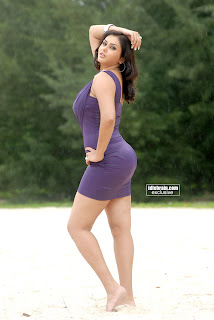Main article: Eid ul-Fitr
As the most important religious festival for the majority of Muslims, the celebration of Eid ul-Fitr has become a part of the culture of Bangladesh. The government of Bangladesh declares the holiday for three days on Eid-ul Fitr. People living in towns have their families or parents in villages go to their country homes to meet relatives and celebrate the festival together. All outgoing public transport from the major cities have become highly crowded and in many cases the fares tend to rise in spite of government restrictions.
Males from around the Barashalghar union of Comilla's Debidwar upazila can be seen attending Khutbah as part of the Eid-ul-Adha prayers on November 7, 2011.
On Eid day, the Eid prayer are held all over the country, in open areas like fields or inside mosques. In Dhaka, the largest Eid prayer is held at the national Eidgah. All major mosques including the Baitul Mukarram also holds prayers. The biggest congregation of Bangladesh is held at Sholakia in Kishoreganj, where about half a million people join the Eid prayer.[1] After the Eid prayers, people return home, visit each other's home and eat sweet dishes called shirni. Throughout the day gentlemen embrace each other. It is also customary for junior members of the society to touch the feet of the seniors, and seniors returning blessings (sometimes with a small sum of money as a gift). In the rural areas, the Eid festival is observed with great fanfare. In some areas Eid fares are arranged. Different types of games including boat racing, kabaddi, and other traditional Bangladeshi games, as well as modern games like cricket and football are played on this occasion. In urban areas, people play music, visit each other's houses and eat special food. Watching movies and television programs has also become an integral part of the Eid celebration in urban areas. All local TV channels air special program for several days for this occasion.
The music and dance styles of Bangladesh may be divided into three categories: classical, folk, and modern. The classical style has been influenced by other prevalent classical forms of music and dances of the Indian subcontinent, and accordingly show some influenced dance forms like Bharata Natyam and Kuchipudi. The folk and tribal music and dance forms of Bangladesh are of indigenous origin and rooted to the soil of Bangladesh. Several dancing styles in vogue in the north-eastern part of the Indian subcontinent, like monipuri and santal dances, are also practiced in Bangladesh, but Bangladesh has developed its own distinct dancing styles. Bangladesh has a rich tradition of folk songs, with lyrics rooted into vibrant tradition and spirituality, mysticism, and devotion. Such folk songs also revolve round several other themes, including love themes. Most prevalent of folk songs and music traditions include Bhatiali, Baul, Marfati, Murshidi, and Bhawaiya. Lyricists like Lalon Shah, Hason Raja, Kangal Harinath, Romesh Shill, Abbas Uddin, and many unknown anonymous lyricists have enriched the tradition of folk songs of Bangladesh. In relatively modern context, Rabindra Sangeet and Nazrul Geeti form precious cultural heritage of Bangladesh. In recent time, western influences have given rise to several quality rock bands, particularly in urban centers like Dhaka. Several musical instruments, some of them of indigenous origin, are used in Bangladesh, and major musical instruments used are the bamboo flute (banshi), drums (dhol), a single stringed instrument named ektara, a four stringed instrument called dotara, and a pair of metal bawls used for rhythm effect called mandira, are important in the culture of Bangladesh. Currently, several musical instruments of western origin like guitars, drums, and the saxophone are also used, sometimes alongside with traditional instruments.
Subscribe to:
Comments (Atom)
































































